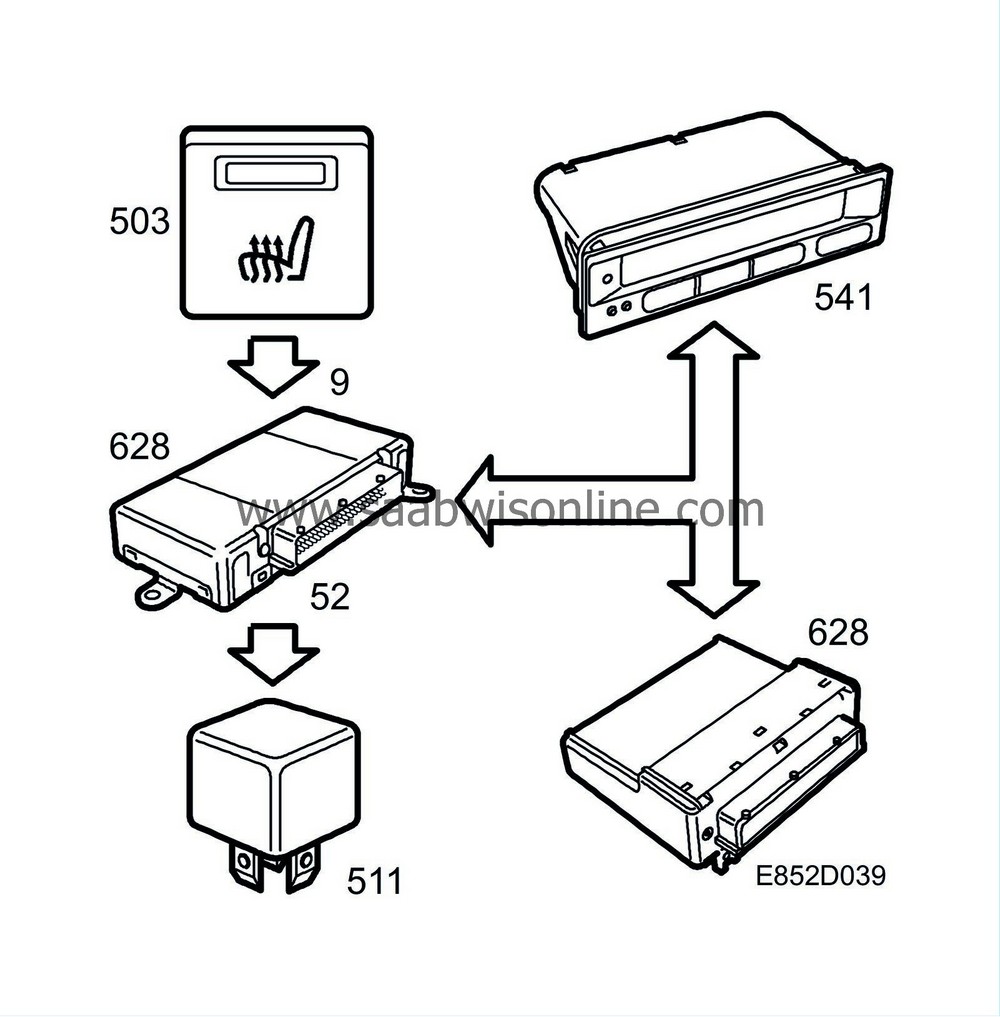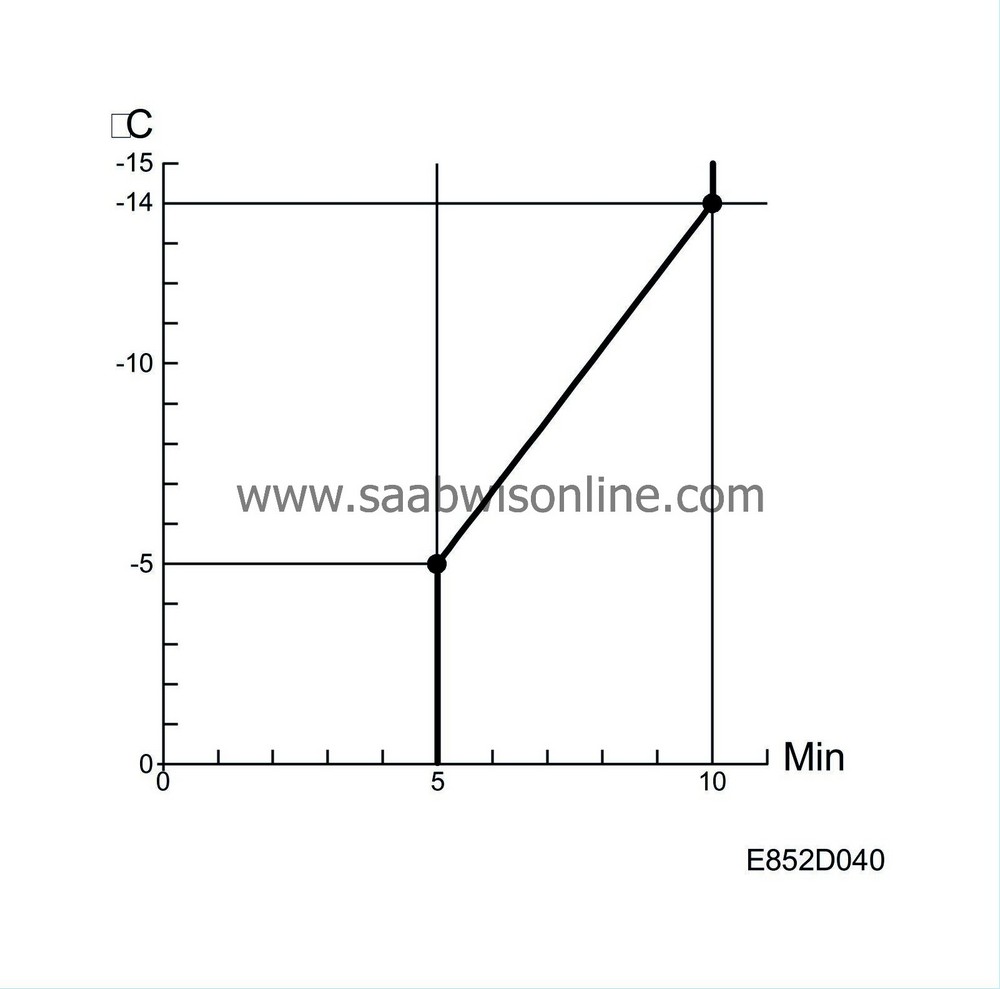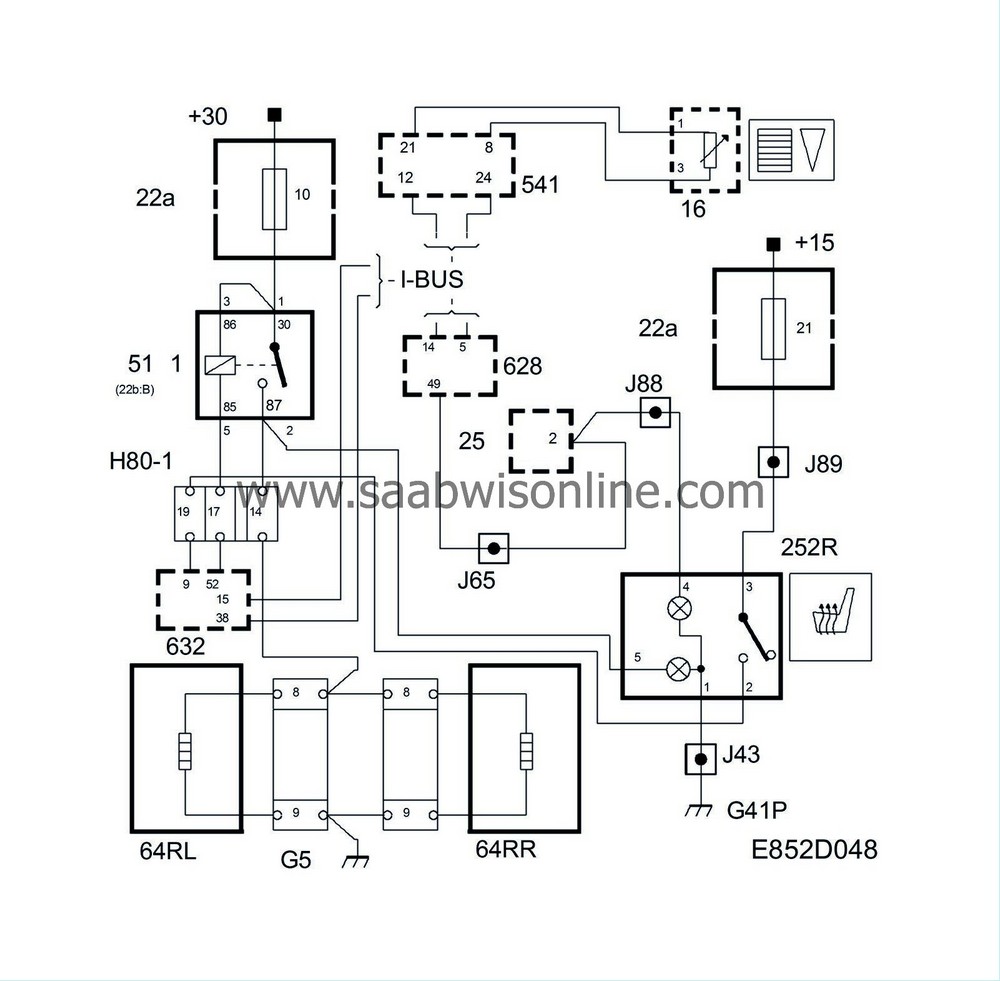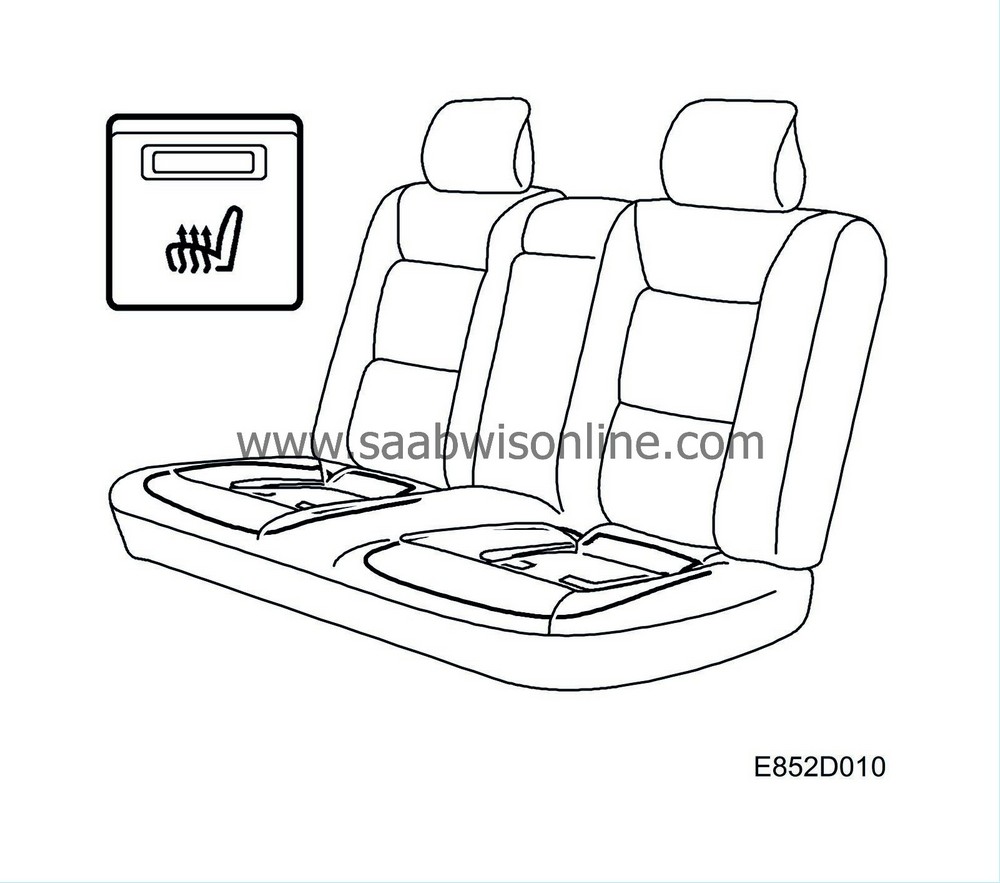PRE-RELEASE
Heated rear seat
| Heated rear seat |
The heating is controlled manually and can only be turned on when the ignition is ON. The heating time is controlled by TWICE and depends on the exterior temperature.
| Description of operation |

When the switch (252R) for the heated rear seat is pressed, B+ is supplied to pin 9 in TWICE. TWICE grounds the relay for the heated rear seat via pin 52.
The relay trips and supplies B+ via fuse 10 to the heating pad in the rear seat and to the switch indicator.
The length of time the heating is active depends on the exterior temperature. TWICE receives information on the exterior temperature from SID via the bus.
When the outside temperature exceeds -5 °C, the heating will be on for 5 minutes. If the outside temperature is lower than -5°C, it will stay on longer. At -14°C it will have reached its maximum activation time. This is programmable from 3-18 minutes but is normally preset to 10 minutes.


To avoid loading the battery more than necessary when the starter motor is activated (+15 ON, +54 OFF), TWICE switches off the electric heating. When the ignition key is then turned back from ST to ON, TWICE turns the heating on again.
For safety reasons, the length of time it is disconnected is maximized at 20 seconds so that the heating works even if +54 is missing in the event of a fault.
TWICE receives information on the ignition +54 from DICE via the bus. Ignition +15 is connected to pin 16 of TWICE.
| Button and controls lighting |
The switch for the heated rear seat is lit by a bulb powered from DICE (pin 49, rheostat level). This voltage supplies the buttons and controls, ashtray light and cigarette lighter. For further information see Group 3 DICE, Button illumination and lighting for controls.
| Diagnostics |
In the event of a fault in the relay control circuit, diagnostic trouble code B1130 is generated in TWICE. The diagnostic trouble code is generated if there is:
| • |
An open circuit or short circuit to ground
|
|
| • |
A short-circuit to B+.
|
|
No diagnostic trouble code is generated for voltages below 11V or during diagnostic communication. The control module output can be activated using the diagnostic tool.



